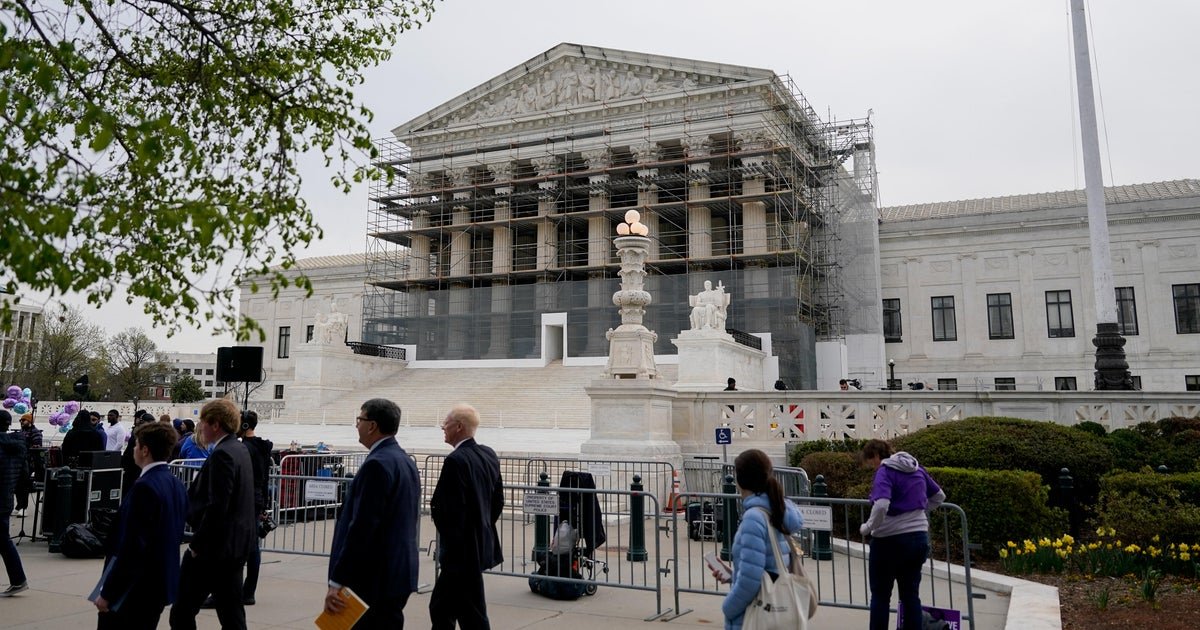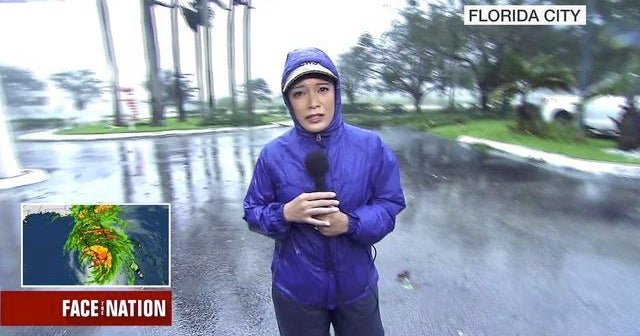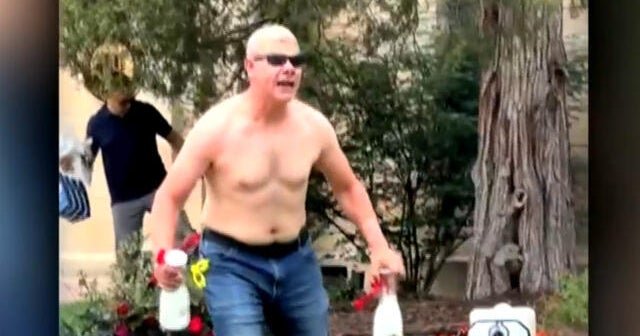[ad_1]
Washington — The Supreme Court on Thursday allowed President Trump to remove two members of federal independent labor boards while legal proceedings over their firings move forward.
The high court granted a request for emergency relief from the Trump administration to pause a pair of lower court rulings that voided Mr. Trump’s removals of Gwynne Wilcox from the National Labor Relations Board and Cathy Harris from the Merit Systems Protection Board.
Justices Sonia Sotomayor, Elena Kagan and Ketanji Brown Jackson dissented from the court’s decision.
Chief Justice John Roberts had already temporarily halted the decisions to allow the Supreme Court more time to consider Mr. Trump’s emergency appeal. The order from the full court means Wilcox and Harris will remain out of their jobs while the challenge to their firings continues.
Wilcox and Harris’ employment statuses have ping-ponged since they were informed by the Trump administration earlier this year that they were removed from their respective roles. Wilcox had been appointed to the NLRB by former President Joe Biden and confirmed to a second five-year term in 2023. Harris was tapped by Biden to serve on the MSPB in 2022 for a seven-year term.
Each official sued the Trump administration over their firings, arguing they violated the for-cause removal laws that limited the president’s ability to oust them. Two separate federal judges in Washington, D.C., agreed and voided the firings. The judges each said Wilcox and Harris could remain in their roles at their respective agencies while their litigation plays out.
But a three-judge panel on the U.S. Court of Appeals for the District of Columbia Circuit paused those decisions, allowing the president to fire Harris and Wilcox again. The two then asked the full D.C. Circuit to reconsider their cases, and it ruled 7-4 to put the district court decisions back in place, meaning Harris and Wilcox could return to their jobs while their challenges moved forward.
The Trump administration asked the Supreme Court to step in and again allow Mr. Trump to oust Wilcox and Harris. Solicitor General D. John Sauer argued in the request for emergency relief that the Constitution gives the president broad power to remove members of multimember boards that exercise “substantial executive power,” such as the NLRB and MSPB.
“The president should not be forced to delegate his executive power to agency heads who are demonstrably at odds with the administration’s policy objectives for a single day — much less for the months that it would likely take for the courts to resolve this litigation,” Sauer wrote.
He argued that a court violates Article II of the Constitution by ordering an executive officer who was removed by the president to be reinstated to their position.
Sauer also argued that the NLRB and MSPB are not covered by an exception to the president’s power to remove executive officers established by the Supreme Court in 1935. In that case, Humphrey’s Executor v. United States, the high court found that Congress could impose for-cause removal protections to multi-member commissions of experts that are balanced along partisan lines and do not exercise any executive power.
The Trump administration did not ask the Supreme Court to overturn that decision, but did suggest that it could consider whether to invalidate the for-cause removal restrictions governing members of the NLRB and MSPB as a violation of the separation of powers.
But lawyers for Harris and Wilcox each warned that the administration is asking the Supreme Court to invalidate the structure of numerous agencies, putting at risk the independence of entities like the Federal Reserve Board, the National Transportation Safety Board and the Nuclear Regulatory Commission. Mr. Trump had indicated that he would like to fire Fed Chairman Jerome Powell, who he appointed during his first term, writing on social media in April that his “termination cannot come fast enough.” But the president then walked back the suggestion, saying he has “no intention” of getting rid of the Fed chief.
Neal Katyal, who served as acting solicitor general during the Obama administration and is representing Harris, wrote in a filing with the Supreme Court that the president is simply being asked to follow binding precedent, just as his predecessors have done for 90 years.
“History disproves the government’s assertion that the president will be irreparably harmed if he cannot remove Harris,” he wrote. “No other president in our lifetimes has ever attempted to violate for-cause removal statutes in this manner. The current chief executive is not being held to a different standard.”
Katyal also said the MPSB is covered by the exception set by the Supreme Court in its 1935 decision.
“The board is the easy case,” he said. “If the board’s structure is not constitutional under Humphrey’s Executor, nothing is.”
In a separate filing, a lawyer for Wilcox, Deepak Gupta, said the statute that lays out the parameters for firing NLRB members has been on the books for nearly 100 years, and no presidential administration until now has tried to remove a member of the board.
“Nevertheless, the government now claims that its need to remove Gwynne Wilcox is urgent — so urgent that it asks this court to override the en banc D.C. Circuit’s denial of a stay, jettison a century of settled interbranch practice, and signal the overruling of bedrock precedents of this court that have engendered strong reliance interests. The better course is restraint,” he wrote.
Gupta disputed the Trump administration’s claim that it needs emergency relief,, which would require the Supreme Court to “upend decades of tradition to allow the president to remove an NLRB member for the first time now — before this court has even had the opportunity to reconsider its longstanding precedent.”
Beyond the seat on the NLRB that had been filled by Wilcox and Harris’ position on the MSPB, there are still vacancies at both agencies that Mr. Trump can fill. But lawyers for both have argued the president’s firings have hobbled the boards and stymied their ability to adjudicate labor and employment disputes.
“By depriving the board of the quorum it needs to carry out its appellate decision making, the president’s illegal removal causes immediate harm to the workers, employers, and broader public who depend on it,” Gupta wrote.
Since returning to the White House for his second term, Mr. Trump has overseen a sweeping reshaping of the executive branch. He has fired top officials leading a swath of independent agencies and institutions, and gotten rid of independent agency watchdogs. His administration is moving to dismantle other federal entities and programs, sparking legal challenges.
[ad_2]



